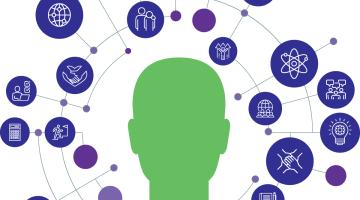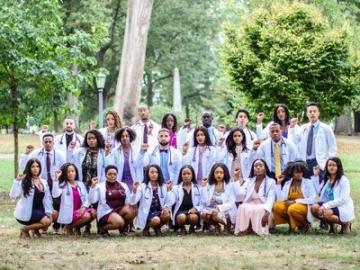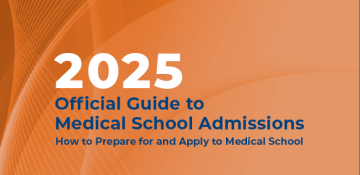New section
“I didn't think I could become a physician. I didn't know any Native Hawaiian doctors and didn't think that people from my background could do well in higher education. I proved myself wrong.”
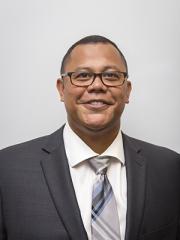
Medical School: MD, University of Hawai’i School of Medicine, 2019
Undergrad: BA, Public Administration UH West Oahu, 2015 (focus: Emergency Preparedness and Disaster Management)
Editor’s Note: The opinions expressed in this article are those of the author and do not necessarily reflect the opinions, positions, or the polices of the AAMC or its members.
New section
Background
- Spent time as a child in the foster care system.
- Worked in the military as an active combat medic.
- Worked in Emergency Medical Services and saw firsthand the need for primary care physicians in rural areas.
- Majored in Public Administration.
- Started a nonprofit soccer academy for the youths of Hilo, Hawai'i.
- Participated in the Native Hawaiian Student Pathway to Medicine and the Ke Ola Mau Scholars Program.
- Was designated the outstanding graduate for his degree of study at the University of Hawai'i West Oahu.
Academics
Mike’s advisor, Jonathan Awaya, PhD, assured Mike that his poor performance in his early college years wouldn’t pose a problem. “Mike didn’t have the drive and passion to do well initially, [which] caused him to drop out of school, but his excellent performance once deciding to go back demonstrated that he was now a completely different student.” Mike chose to major in Public Administration to further his interaction and experience with legislature and to further his experience in administration. He said, “I feel strongly that physicians should be able to articulate the health needs of our communities.”
Once Mike decided to attend medical school, he worked diligently to obtain an AS in EMS alongside his premedical prerequisites at University of Hawai'i at Hilo. At Hilo, he majored in Public Administration because he felt a need for physicians who are able articulate the health needs of their community to policy makers. Mike also participated in a program called Native Hawaiian Student Pathway to Medicine led by the Native Hawaiian Centers of Excellence which helped him prepare for the application process.
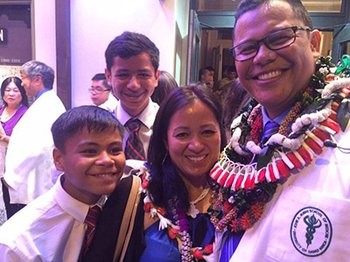
Mike showed a dedication to academic achievement with a 4.0 GPA in his major, and a 3.9 science GPA and was designated as the outstanding graduate for his degree of study at the University of Hawai'i West Oahu. Although his MCAT® scores weren’t strong, his GPA, which was higher than John A. Burns School of Medicine’s average, and heavy course load showed his commitment to a diverse education, as well as his strong work ethic and study skills. According to his advisor, “Mike’s strengths were a strong GPA, an average MCAT score, and he also was the president of the premed club at the University of Hawai'i at Hilo.”
Admissions Director, Ivy Asano, MD, MAT/Ed, agrees that his transcripts and GPA demonstrated commitment, diligence, hard work, perseverance, and reflected his teachable nature. “Mike made it through the first round of reviews based on his relevant experiences and strong academic achievement during his premedical studies.” She described Mike’s story as a journey travelled not by one person alone but by a multitude of individuals that have supported him and his efforts to become a physician.
Experiences
When applying to medical school, Mike already had more than two decades of EMS experience which distinguished him from other applicants. While working in EMS, Mike saw the impact of the physician shortage on the island of Hawai'i. As a firefighter paramedic, Mike observed people using EMS Emergency Departments as a bridge for primary care and realized that medicine was his passion. Mike’s advisor described him as an intelligent and brave individual with an incredible passion to provide the best health care to those who need it. “When I first talked with Mike about his experience as a firefighter, he explained how many of the 911 calls he responded [to] were not fires or medical emergencies, but people from rural communities that needed regular health care and were using 911 emergency how many of us use a doctor’s visit.” Through this experience, Mike witnessed the need for primary physicians and health care providers on a regular basis. (Interested in becoming an Emergency Medical Technician? Read more about what it's like to be an EMT here!)
“After a couple years and a personal incident, I realized that it was my passion to pursue medicine that motivated my career in EMS. Prior to this realization, I didn’t think that I could become a physician. I didn’t know any Native Hawaiian doctors, and I thought that people from my background didn’t do well in higher education.” Instead of continuing his career in the fire department, he decided to make a career change and apply to medical school. He researched the application process thoroughly.
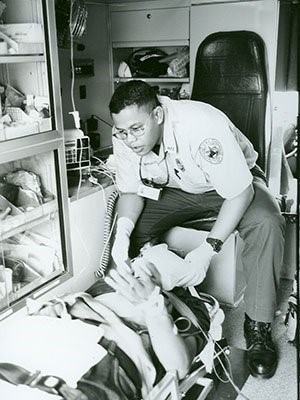
Mike believes that his firefighting experience along with the fact that very few Native Hawaiians pursue medicine helped him stand out during the application process. Mike said, “I think that the main skill that my application showed was my ability to organize and facilitate activities that made a difference in my community. I started a nonprofit soccer academy for the youth of Hilo, Hawai'i. I chaired the electronic documentation committee for my department in the transition from paper to electronic health records. I was also president of my undergraduate premedical club and liaison with the medical school.”
Dr. Awaya thinks what made Mike’s application stronger was his nontraditional pathway to medical school. His life experiences and experience as a firefighter allowed him to understand the current health care issues in his community. When Mike decided to return to school from a long career in the Hawaii Fire Department, he set up a meeting to plan his course work (prerequisites) for every semester until he planned to apply for medical school.
Mike immediately stood out as a strong candidate. His application speaks beyond more than a good story. His experience as an Active Duty Combat Medic and military duty; MICT/EMT/firefighter training as well as his involvement with the State of Hawai'i Department of Health EMS Data Committee, Domestic Violence Fatality Review; American Heart Association; and his participation in the Native Hawaiian Student Pathway to Medicine and the Ke Ola Mau Scholars Program emphasized that he was a tenacious, teachable, and humble person.
Personal Statement
Mike highlighted how he developed a passion for medicine. “I wrote about an event that occurred, which spurred my interest in ensuring that the members of my community had adequate physician coverage. I had two people review my statement, my primary mentor and a current medical student.”
Through his essays, Mike began to convey a sense of his character. “We saw more of his 'heart' and the passion that he had for not just learning medicine but his passion for our community. His personal statement and essays conveyed a very deliberate path towards shaping his breadth of knowledge regarding the health care system, a desire to improve the health of our communities in Hawai'i, and a commitment to grow and inspire a future generation of physicians,” shared Dr. Asano.
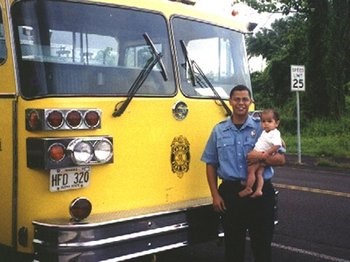
Dr. Asano remembers that in his primary application, Mike described himself as “disadvantaged” and “underserved.” Despite challenging circumstances along his pathway to medicine, Mike did not become a victim of his circumstances. His application demonstrated thoughtfulness, perseverance, and diligence. His personal statement and experiences conveyed a sense of humility and gratitude for the numerous and diverse opportunities he was afforded. He took advantage of those opportunities and maximized them to their fullest.
Mike’s advisor said that his essay was probably the strongest illustration of his experiences. Dr. Awaya shared “He is the best at telling his own story. Mike knows his strengths and weaknesses, and he knew how to use them in crafting a great essay for his application.”
Letters of Evaluation
When choosing his letter writers, Mike selected professors with whom he had a good relationship. “I made sure to get to know who they were and what their interests were. I also shared my passions with them. I felt that if they knew me well, they could provide more insight into my character in their letters. I also chose to have physician mentors who had observed me in my career as a firefighter paramedic. I knew that they could speak to my work ethic and passion for my community.”
Mike thought that the essays and letters of recommendation from former medical directors and professors helped the most, and his admissions director agreed. Dr. Asano said that “Mike’s personal writing spoke to his character and what was important to him. His interviews and letters of evaluation further allowed us to see his hopes for his future and his commitment to his community.”
Interview
During his application process, Mike was most confident about the interview portion. He explained that his work, education, and life experienced helped him do well in face-to-face discussions. “I had mock interviews with mentors and with some of their friends. I think mock interviews with someone that I did not know prior helped to set a more realistic scenario.” In the interview, he was able to convey his passion for medicine and his community. “I think that opened the discussion on my time management, study skills, and test-taking abilities. I also connected well to my interviewers and did my best to communicate my personal passions that I had also shared in my essays.”
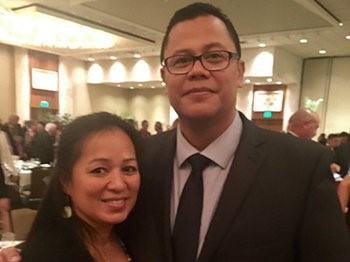
Dr. Asano relayed that he really shone during his interviews. His reviewers garnered a true sense of his character and motivations. Interviewers described Mike as a leader and an anchor. He conveyed his maturity, professionalism, and demonstrated his superior communication skills.
Though his road to JABSOM has been long and difficult, he has been very deliberate and thoughtful about crafting his own path. “At the interview, I truly realized how inspiring Mike is. It allowed me to see and hear about his commitment to service and his abilities to work in teams as well as his experiences with cultural responsiveness and the responsibility that he bears/owns for it.”
Mike on Why He Chose University of Hawai’i
Mike explained that his medical school’s mission to care for the people of Hawai'i was a key factor. “I also like their Problem-based Learning (PBL) curriculum and found that style of education very compelling. JABSOM is a school committed to the local community, which includes cultural awareness and interaction.” Mike thinks that his application showed a particularly strong passion for that very same community.
University of Hawai’i on Why They Chose Mike
Mike’s application demonstrated his promise as a future physician and leader in healthcare. With his academic prowess, experience, and his personal characteristics, he is expected to contribute to the delivery of high-quality healthcare. His experiences show his abilities to work with others in establishing community partnerships and multidisciplinary collaborations. Further, his cultural responsiveness makes him particularly appropriate for work with our alliances in Hawaii and the Asia-Pacific region.
Mike’s journey is a story of struggle, hard work, and resilience. It is a success story of a student who had a dream and who made the commitment to himself to pursue that dream. I believe that Mike is a perfect fit for JABSOM in that he embodies our shared core values and the mission of our school is truly part of his personal fabric.
New section
Highlighted Competencies
Note: This section helps to illustrate how multiple competencies can be demonstrated across many experiences, activities, and parts of your application.
Effectively conveys information to others using spoken words and sentences; actively listens to understand the meaning and intent behind what others say; and recognizes potential communication barriers and adjusts approach or clarifies information as needed.
MICT/EMT/Firefighter experience; AHA instructor; coaching experience; mentoring experience; community service work.
Grew up in medically underserved areas; in the foster care system; non-traditional pathway to medicine.
Uses logic and reasoning to identify the strengths and weaknesses of alternative solutions, conclusions, or approaches to problems.
Coursework; state and county work on quality improvement committees and projects.
